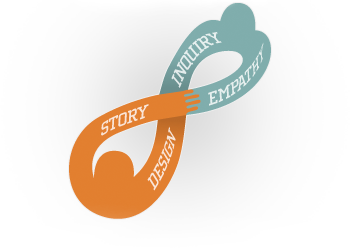Help Teachers Grow More: A Guide to Evocative Coaching
If you haven’t heard of evocative coaching, you may be wondering what makes it different from and more effective than other models of teacher coaching.
Megan Tschannen-Moran, a William & Mary School of Education professor, coined the term and developed its coaching model. In the evocative coaching model, Megan urges coaches to forgo directive coaching and instead put teachers in the driver’s seat of their own learning.
The author of Evocative Coaching: Transforming Schools One Conversation at a Time talked to Edthena founder and CEO Adam Geller about the what’s and how’s of the evocative coaching model.
You can watch the full PLtogether Lounge Talk above or read on for our breakdown about this type of coaching and how it helps teachers grow more.
Evocative coaching focuses on teacher-led growth
With the word “evocative” meaning to call forth, Professor Megan Tschannen-Moran named that a coach’s job is to open up space for the person being coached.
Megan said, “[Teachers] are in charge of their own learning and growth. And our job is to create an inviting space where they can discover the answers that are within.”
The coach’s input is not to provide answers or even directive suggestions.
“Our primary job as coaches is to ask powerful questions that get people to reflect and to think deeply about their own work in order to discover their own answers,” Megan explained.
This empowers teachers being coached to have ownership over their own development.
The two phases of evocative coaching

To paraphrase Megan’s words, evocative coaching is a dynamic dance made up of four distinct steps: Story – Empathy – Inquiry – Design.
But these actions are not happening all at once.
Instead, the evocative coaching model has two distinct phases:
- The No-fault Turn
- The Strengths-building Turn
Megan described, “The first phase is the no-fault phase, and this is where we’re building trust and rapport.”
During The No-fault Turn, coaches are inviting teachers to tell the story of their classrooms and professional goals and challenges, and coaches are expressing empathy for the teacher’s experiences.
The second phase is The Strengths-building Turn. This is when teachers identify their strengths—what Megan calls appreciative inquiry—and articulate a hypothesis about how they can improve their instruction using design thinking.
Differentiated from smart goals, coaches guide teachers to design a smart experiment about the next step of their learning and growth.
Key to this is the follow-up: Megan says that coaches should ask, “How did you grow?” instead of “How did it go?”
Teachers can identify what new insights and learning emerged from their experiment and then consider how to build next steps from what was learned.
Avoiding the “Fix It” pitfall when it’s hard to stop directing

The short response to coaches who are prone to giving teachers the answers (or even just helpful hints)? Stop.
Teachers may indeed get stuck at points in their smart experiment and not know what to do. Even then, Megan Tschannen-Moran says that coaches must refrain from helping too directly.
“[Keep] the responsibility and the ownership of professional learning with the person,” urged Megan.
One way to get out of the tendency to want to fix the problem is actually a strategy borrowed from Hollywood screenwriters.
Coaches can say, “Tell me three things you’ve already tried and what didn’t work. … Now, what’s the worst idea you could put out on the table?”
This method of brainstorming allows teachers to draw forth any, even ineffective, solution to their own roadblock, and also brings levity to the difficult situation.
With an initial “bad” idea out of the way, teachers are often able to think of more possible solutions.
Megan warned, “We, as a coach, never want to be the one doing all the brainstorming. … And even if we put the first idea on the table, [teachers] are likely to think, ‘oh, that’s the thing you want me to do.’”
Rather, coaches can keep motivation flowing by ensuring the ownership stays with the teacher.
Teacher improvement comes from within themselves
It can be tempting for coaches to lead with directive coaching, telling teachers how to improve their instruction. This often comes from a place of wanting to help and provide answers.
But, Megan Tschannen-Moran insists this will not lead to as much growth as when teachers are leading their own learning. Evocative coaching is a coaching model designed to keep teachers at the forefront.
For templates and other resources supporting the evocative coaching model, check out schooltransformation.com.
And for more from Megan Tschannen-Moran, check out our blog post about Megan’s four coaching best practices.


